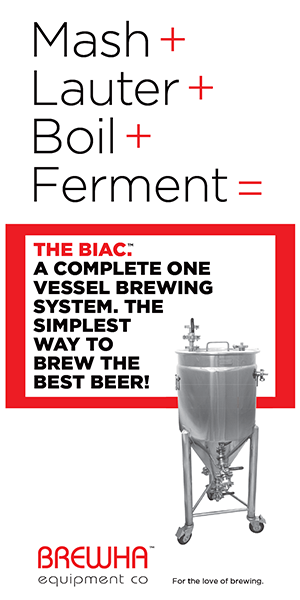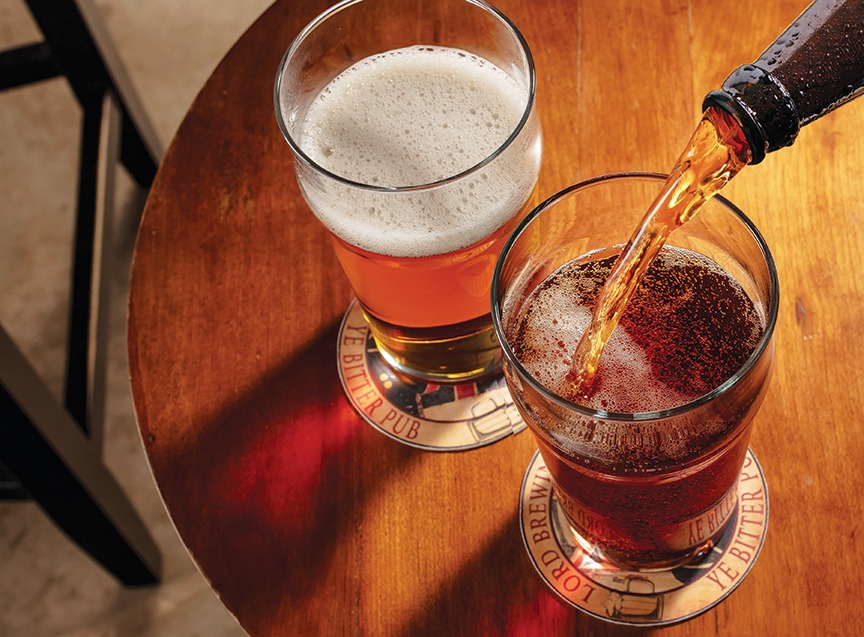Oktoberfest / Märzen
OG = 1.050 to 1.064 FG =1.012 to
1.016 IBUs = 20 to 30 SRM = 7 to 14
Oktoberfests are intensely appealing. They are best described as liquid bread, with the rich, velvety taste coming from the long lagering period at cold temperatures. Typically they are brewed in the early spring, at the end of the brewing season, and stored in cold cellars (or caves) during the summer until the Oktoberfest celebration. The Oktoberfest festival this year will take place in Munich from September 22nd to October 7th.
This Märzen recipe is a classic German-style Oktoberfest. The first sip enters full of slightly-nutty malt, with nuances of freshly-baked bread. The finish is full of delicious malt without much sweetness.
Commercial Beers to Try
Many commercial examples of this style are available, beginning in early September until late November. Paulaner Oktoberfest, Würzburger Oktoberfest, Hacker-Pschorr Oktoberfest and Spaten Ur-Märzen are great examples.
The aroma should be a powerful German Vienna or Munich malt nose, with a lightly toasted malt aroma possible. There should be no fruitiness, diacetyl or hop aroma. The color is dark-gold to reddish amber. The malt flavor can have a toasted aspect. The hop bitterness is moderate and hop flavor is low to none. This medium-bodied beer has medium carbonation and the finish is not overly sweet.
Hops, Malt and Yeast
The hops should all be Continental, especially noble varieties. German Hallertau Hersbrucker, Czech Saaz and Tettnanger are the classic choices. The grain bill is composed of German Vienna, German Munich and German pilsner malts with small amounts of crystal malts. All the malt should be the finest two-row barley. We recommend Munich Lager (Wyeast 2308) and Bohemian Lager (Wyeast 2124).
If you can’t obtain lager temperatures (47° to 52° F), California Lager (Wyeast 2112) can be used. Ferment the beer at 60° to 62° F. If ale yeasts are used, ferment them at lower-than-normal temperatures (60° to 65° F). We suggest European Ale (Wyeast 1338) and London ESB (Wyeast 1968).
Most basements have cool spots for a carboy. A cement floor close to an outside cement wall is best. If you have outside Bilco doors, use that area for lagering.
Serving Suggestions
Serve in a German one-liter mug at 48° F with assorted grilled wursts. Accompany with thick slices of German black bread, grainy mustard, kraut, sautéed cabbage and onions, dill pickles and horseradish for a wonderful Oktoberfest feast.
Classic Oktoberfest Märzen
(5 gallons, extract with grains)
OG = 1.060 to 1.061 FG =1.016 to 1.017 IBUs = 22
Ingredients
11 oz. Belgian cara-Munich malt
10 oz. German Munich malt
10 oz. German Vienna malt
4 oz. Belgian aromatic Malt
3.5 lbs. light malt extract syrup
3.5 lbs. Muntons extra-light DME
6 oz. malto-dextrin
4.9 AAUs Northern Brewer (0.50 oz. at 9.8% alpha acid) (bittering)
1.0 AAUs German Hallertau Hersbrucker (0.25 oz. at 4% alpha acid) (bittering)
1 tsp. Irish moss
Munich Lager (Wyeast 2308) or Oktoberfest Lager (White Labs WLP820)
1-1/4 cup Muntons extra-light DME for priming
Step by Step
Bring one gal. of water to 155° F, add 10 oz. German Munich malt, 10 oz. German Vienna malt and 4 oz. Belgian aromatic malt and hold for 30 min. at 150° F. In another pot, bring 1/2 gal. water to 155° F, add 11 oz. Belgian cara-Munich malt and hold for 30 min. at 150° F.
Strain into the brewpot and sparge with one gal. of 168° F water. Add the dry malt, malt syrup, malto-dextrin and bittering hops. Bring the total volume in the brewpot to 3.5 gal.
Boil for 45 min. Add the Irish moss. Boil for 15 min., then remove from the stove. Cool wort for 15 minutes. Strain into the primary fermenter and add water to obtain 5-1/8 gal. Add yeast when wort has cooled to below 80° F. Oxygenate-aerate well.
Ferment at 47° to 52° F for 7 days. Rack to secondary. Ferment at 47° to 52° F for 4 weeks. Bring the fermenter to 60° to 62° F until target gravity has been reached and the beer has cleared (approximately 2 weeks). Prime and bottle. Carbonate at 70° to 72° F for 2 to 3 weeks. Store at cellar temperature.
Partial-mash option: Acidify the mash water to below 7.2 pH. Mash 1 lb. German two-row pilsner malt and specialty grains in 1 gal. water at 150° F for 90 min. Sparge with 1.5 gal. water at 5.7 pH and 168° F. Follow the extract recipe, omitting 1.75 lbs. of Muntons extra-light DME from the boil.
All-grain option:
Acidify the mash water to below 7.2 pH. Mash 4 lbs. German Vienna malt, 3.75 lbs. German Munich malt, 3.75 lbs. German two-row pilsner malt, 5 oz. Belgian cara-Munich malt and 4 oz. Belgian aromatic malt in 4 gal. of water at 154° F for 90 min. Sparge with 5 gal. of water at 5.7 pH and 168° F. The total boil time is 105 min. Add 5.3 AAU of bittering hops for the last 90 min. of the boil. Add the Irish moss as indicated above.
Helpful Hints:
If your water is soft (below 50 ppm) add 3/4 tsp. gypsum, 1/8 tsp. non-iodized table salt and 1/4 tsp. chalk to adjust your water for the style. If it is hard (greater than 200 ppm hardness) dilute it 50/50 with distilled water. This beer can be lagered between 1 and 2 months. Begin lagering at 45° F and slowly decrease the temperature to 34° F over a period of 2 weeks. It will peak between 3 and 7 months after it’s carbonated and will last at cellar temperatures for 9 months.



